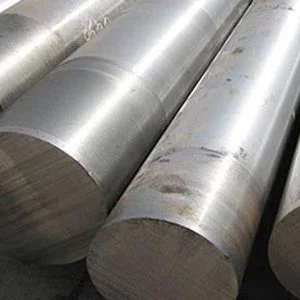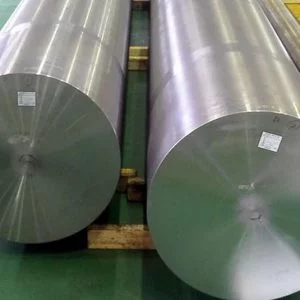Introduction

1018 steel, a low-carbon steel alloy, stands out due to its distinctive properties that make it a preferred material in various industrial sectors. The unique 1018 steel properties contribute to its widespread use in manufacturing, automotive, and construction industries. In this blog, we will explore how the 1018 steel properties influence its performance across different applications, highlighting its advantages, limitations, and specific uses.
Understanding 1018 Steel Properties
Composition and Structure
The 1018 steel properties are defined by its composition, which includes:
- Carbon (C): 0.15-0.20%
- Manganese (Mn): 0.60-0.90%
- Phosphorus (P): ≤0.04%
- Sulfur (S): ≤0.05%
These elements together give 1018 steel its characteristic properties of machinability, weldability, and moderate strength.
Mechanical Properties
The mechanical 1018 steel properties include:
- Tensile Strength: Approximately 440 MPa (63,000 psi)
- Yield Strength: Around 370 MPa (53,000 psi)
- Elongation: 15-20% in 50 mm (2 inches)
- Hardness: About 126 HB (Brinell Hardness)
These properties make 1018 steel a versatile material with a good balance of strength and ductility.
How 1018 Steel Properties Affect Its Performance
Machinability
1018 steel properties make it highly machinable. The low carbon content allows for smooth cutting and shaping, which is beneficial in manufacturing complex parts and precision components.
Weldability
The weldability of 1018 steel is another key aspect influenced by its properties. Its composition supports various welding techniques with minimal preheating, making it suitable for structural applications.
Strength and Durability
While 1018 steel properties include moderate tensile and yield strength, it is best suited for applications where high strength is not critical. Its performance in terms of strength and durability is adequate for many structural and mechanical components.
Formability
1018 steel’s properties also include good formability, allowing it to be easily rolled, drawn, or forged into various shapes and sizes. This flexibility is advantageous for producing custom parts.
Applications in Different Industries
Automotive Industry
In the automotive sector, 1018 steel properties are leveraged for:
- Engine Components: Parts like gears and shafts benefit from the steel’s machinability and strength.
- Structural Supports: Components such as brackets and bolts are commonly made from 1018 steel.
Manufacturing
For manufacturing, the properties of 1018 steel are utilized in:
- Machine Parts: Precision components like bushings and fixtures are often made from 1018 steel due to its ease of machining.
- Tooling: Fixtures and jigs are manufactured from 1018 steel for accurate and efficient operations.
Construction
In construction, 1018 steel properties make it suitable for:
- Structural Elements: Beams, columns, and other supports benefit from its good weldability and moderate strength.
- Fabrication: The steel’s properties allow for effective use in structural fabrication.
Aerospace
Though less common, 1018 steel’s properties are sometimes applied in aerospace for:
- Non-Critical Components: Parts such as brackets and fasteners where high strength is not as critical.
Table: Comparison of 1018 Steel Properties with Other Steels
| Property | 1018 Steel Properties | 1045 Steel Properties | 4130 Steel Properties | 304 Stainless Steel Properties |
|---|---|---|---|---|
| Carbon Content | 0.15-0.20% | 0.43-0.50% | 0.28-0.33% | 0.08% |
| Tensile Strength | 440 MPa (63,000 psi) | 655 MPa (95,000 psi) | 560 MPa (81,000 psi) | 520 MPa (75,000 psi) |
| Yield Strength | 370 MPa (53,000 psi) | 440 MPa (64,000 psi) | 460 MPa (67,000 psi) | 215 MPa (31,000 psi) |
| Elongation | 15-20% in 50 mm | 14% in 50 mm | 21% in 50 mm | 50% in 50 mm |
| Hardness (Brinell) | 126 HB | 207 HB | 197 HB | 201 HB |
| Weldability | Good | Moderate | Good | Excellent |
Benefits of 1018 Steel Properties
Cost-Effectiveness
1018 steel properties ensure it is cost-effective compared to high-alloy steels. This makes it an economical choice for various applications.
Ease of Machining
The excellent machinability due to 1018 steel’s properties allows for efficient and precise manufacturing processes.
Versatile Applications
The balanced properties of 1018 steel make it versatile for a range of applications, from automotive parts to construction elements.
Good Weldability
Its ability to be easily welded enhances its utility in applications requiring joining of different components.
Limitations of 1018 Steel Properties

Lower Strength
1018 steel has lower tensile and yield strength compared to higher carbon steels, which limits its use in high-stress applications.
High-Temperature Limitations
1018 steel is not suitable for high-temperature applications due to its reduced strength at elevated temperatures.
Corrosion Resistance
1018 steel’s properties do not include high corrosion resistance, making it less suitable for environments exposed to moisture and chemicals.
Conclusion
1018 steel properties offer a blend of machinability, weldability, and moderate strength that makes it suitable for various applications across multiple industries. Understanding these properties helps in selecting the right material for specific needs, balancing performance, cost, and application requirements. Despite its limitations, 1018 steel remains a popular choice due to its versatile and reliable performance.
FAQ
What makes 1018 steel a good choice for machining?
The low carbon content of 1018 steel provides excellent machinability, allowing for smooth and efficient processing.
How does 1018 steel perform in welding applications?
1018 steel properties include good weldability, enabling effective welding with minimal preheating.
What are the primary industrial uses of 1018 steel?
Common uses include automotive components, machinery parts, structural elements in construction, and some aerospace applications.
What are the limitations of 1018 steel compared to other carbon steels?
1018 steel has lower tensile and yield strength, limited high-temperature performance, and less corrosion resistance compared to higher carbon steels.
Is 1018 steel suitable for high-temperature environments?
No, 1018 steel is not ideal for high-temperature applications due to its lower strength at elevated temperatures.
